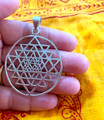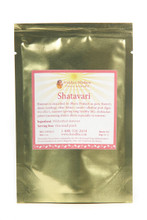 Loading... Please wait...
Loading... Please wait...Categories
- Ashwagandha
- Magnesium
- Preserves
- Turmeric
- Dosha: Pitta
- ASHOKA formulations
- Bath Pouches
- Bone Care
- Chyawanprash
- Souvenirs
- Creams
- Dosha:Vata
- Eyes, Ears, Sinus, Throat
- Face Clay
- Immune
- Dosha:Kapha
- Laundry
- Lentils
- Lip balms
- Liver & Kidneys
- Lotions
- Masalas
- Muscles & Joints
- Oral & Mouth
- Shampoo & Conditioner
- Soaps
- Spray Mists
- Pre Biotics and Probiotics
- Stress & Adrenals
- Dosha:Pitta
- GHEE
- Garcinia
- Protein For Vegans and Vegetarians
- Chutneys & Preserves
- Circulation: Physical and Vibrational
- EVERYTHING ROSE
- Lotions, Creams, & Body Mists
- Shilajit in Formulations
- Thyroid & Adrenals
- Guduchi: Transdermal, Transmucosal, & Oral
- Lotions & Body Creams
- Floral Aromas, Incense, Air Freshener, Body Mist
- Autumn Care
- Ayurvedic Pet Care
- Baby & Children
- Bath, Soaps & Deodorants
- Body Massage Oils
- Cellulite & Skin Care
- Colon Care
- Cooking, Spices, Condiments, & Oils
- DETOX
- Cough & Cold
- Digestion
- ONLINE Courses, Audio, and Printed Materials
- EMF Management
- Emotional Support & Balance
- Eye & Vision
- Fat & Sugar Metabolism
- Gift Baskets
- KICHDI-ON-THE-GO
- Hair Care
- Herbal-Memory Nectars
- Herbal Teas/Coffee Substitutes
- Home (Air Fresheners & Laundry)
- Hormonal Modulation for her & for him
- HP Herbal Nectar Drops
- Immunity & Health
- Individual Herbs & Spices
- Lalita’s Skin & Beauty
- Men’s Health & Shaving
- Mind & Mental Stress Support
- Moringa
- Multi-Minerals
- Oral Care - SVADANTA
- Silver Gift Items
- Sinus Care & Nasya (Nasal) Oils
- Sleep
- Special Needs: Skin & Body
- Stress Management
- Summer Care
- SVA Samadhi with Marma
- Tablets and Capsules
- Transdermal Creams
- Tulsi
- Tridoshic Pain Management
- Vit D, B12, Magnesium, ALA, CoQ10
- Travel Sample Sizes & Starter Kits
- Wild Amla & Chyawanprash
- Winter Care
- Women's Health
New Products
Our Newsletter
- Home
- Individual Herbs & Spices
- Shatavari Powder
Product Description
As a lactating mother, do you experience an abnormally low flow of breast milk? Shatavari is an ancient Ayurvedic herb described in Sanskrit to be sthanyakari (enhancing breast milk production).
The Underlying Cause of Low Breast Milk According to Ayurveda
The main cause of low breast milk, according to Shaka Vansya Ayurveda, is a depletion of soma (nature's cooling nurturing intelligence) in the mother's body. The female physiology naturally has more soma than the male body. This is why only women have the ability to nurture and grow a baby starting from a one-celled organism.
Throughout pregnancy, the female body uses its stored soma to nurture and feed the developing fetus. After birth, breastfeeding continues this process of the mother giving soma to the child.
Sometimes, if the mother's body does not have enough reserve of soma to begin with, pregnancy can deplete the mother's soma and breast milk production will be low after pregnancy.
The solution is to raise the level of soma reserves in the mother's body. There are many nourishing foods which help in this regard, and the herb, shatavari, is also very helpful. When soma is high again in the mother's body, the amount of milk available for the baby naturally goes up.
The ancient text, Bhava Prakash, says that shatavari is kashayapaha (helpful for building up any depleted tissues). This includes breast milk, an upadhatu (sub-tissue) of rasa dhatu (plasma).
Shatavari Is More Than Just A Breast Milk Enhancer
Shatavari is a hormone enhancer which increases estrogen in the body. It increases strength (balya) in both men and women, improves bliss in life (narayani), improves fertility (bahusuta), and improves sexual stamina (shatavirya and shukrakari). It is also helpful to the eyes (netrya) and useful in the case of high-pitta diarrhea (pitta atisara), as well as in the case of small hemorrhoids (laghurarshapaha).
Shatavari is a cooling herb, whose vibration is very effective in cooling the heart and balancing sadhaka pitta (the pitta in the heart). If emotions are an issue, you will find shatavari as a supporting herb in Vaidya Mishra's Sadhaka Balance Tablets.
Is Your Digestion Strong Enough for Shatavari?
Shatavari is classified in Ayurveda as guru (heavy), sheeta (cooling) and svadvi (sweet). This means that when you take the herb in powder form, it can be heavy to digest. If your digestion is not strong, which is common in the modern world, then the shatavari will not reach its destination in the cells of the body. Instead, the weak digestion will create ama (partially digested material) of the herb.
To avoid this problem, Vaidya Mishra has created a formulation called Shatavari Herbal Memory Nectar. The nectar does not contain the physical herb of shatavari, only its vibrational and most subtle physical essence (sukshma bhag).
Because the physical herb is not found in the product, it does not have to be digested and can be absorbed directly through the mucous membranes into the bloodstream.
This alternative delivery system has proved to be very effective for the modern physiology. It is also able to deliver the herb to the cells very quickly because it does not have to go through the digestive process.
Is Your Source of Shatavari Chemical Free?
The subtle, nourishing vibration of shatavari, (the pure vibration of soma) is destroyed when it comes in contact with modern chemicals. Chemicals are classified as visha (poison) in Ayurveda because they burn soma.
It is therefore very important that shatavari not come in contact with chemicals or fertilizers while growing, nor with chemical extractors like hexane or benzene, nor with chemical preservatives.
Not only do chemicals burn the soma of the herb, making the herb less effective, chemicals also burn your own soma if they come in contact with your body.
If you take an herb that contains residues of chemicals while you are lactating, the baby will also be "poisoned" by the soma burning effect of these toxins. That is why it is especially important to find a very pure source of shatavari.
Vaidya Mishra is a stickler about chemical-free herb sources. He would rather not offer an herb than sell an herb that has been exposed to chemicals. An herb which has been touched by chemicals is like the dead body of the herb. The vibration of the herb is gone, even though the physical properties may still be there.
The power of herbs lies not in their physical properties but in their subtle vibration. Soma, for example, is not a physical property. It cannot be extracted with benzene. It is a subtle vibration. When soma is gone from the herb, what good can it do to increase soma in the body?
For this reason Vaidya Mishra is also concerned that the vibrational energy of the environment where the plants are grown and stored, and the vibration of the people who harvest and prepare his herbs, be pure.
Vaidya Mishra's shatavari is wildcrafted, which means that it is grown in the forest without exposure to chemicals. It is harvested with care, dried and stored to retain the full potency of the herb without any exposure to chemicals or negative vibrations of any kind. You will feel the energy of this very energetic (shatavirya) plant as soon as you open the package.
Learn More About Shatavari in Audio Format
Don't miss an opportunity to learn about shatavari straight from the Ayurvedic source texts. Vaidya Mishra offers a 34 minute audio lecture where he goes through the Sanskrit verses of Bhava Prakash regarding shatavari.
Vaidya Mishra explains each Sanskrit word, and the many meanings of each word, so that you get a complete understanding of the use of shatavari in Ayurveda. You can download the 99¢ audio file, in MP3 format, and listen to it at home or in your car. With repeated listening, you will soon learn the Sanskrit words yourself.
Get the audio file here: Shatavari - Learn About A Great Herb For Balancing Hormones
Ingredients
Grade A wildcraftedshatavari
Size
1 oz.
Directions
Add one pinch of shatavari to your one or two liters of herbal tea mixture given to you by your Shaka Vansya Ayurveda practitioner and sip throughout the day.
Use under the guidance of a Shaka Vansya Ayurveda practitioner. As with all herbs, please consult with your physician before using.
Shatavari In Our Herbal Products
Shatavari Herbal Memory Nectar
- Contains only the subtlest essence of the shatavari (the herbal memory).
- Bypasses the liver, which may be in poor shape due to modern lifestyle, and delivers the prabhavas (special qualities) of shatavari directly to the tissues.
- Travels quickly, without delay of digestion, to the shukra dhatu, heart, brain, colon, and other tissues and begins acting right away.
- Should be added to 1 to 2 liters of cool, neutral pH spring water and sipped throughout the day.
The Following Products Contain Shatavari as an Ingredient
- Flash Freeze Tablets
- Muscle Maintain Tablets
- Fatigue Formula
- Shakti For Her Herbal Memory Nectar
- Kamini Herbal Memory Nectar
- Sadhaka Balance Tablets
- Muscle Maintain Herbal Memory Nectar
- Agni-Shakti Tablets
- Muscle Maintain Herbal Memory Nectar
- Kamini Transdermal Cream
- Optimal-Sensuality Transdermal Cream
- Cream For Her
- Sancharan Transdermal Cream
- Soup Mix For Shakti
- VJK For Shiva and Shakti
Disclaimer
This product and statements have not been evaluated by the FDA (Food and Drug Administration) and are not intended to be used to diagnose, treat or cure any disease. All of the information above is intended for educational purposes only and may not be used to replace or complement medical advice.














